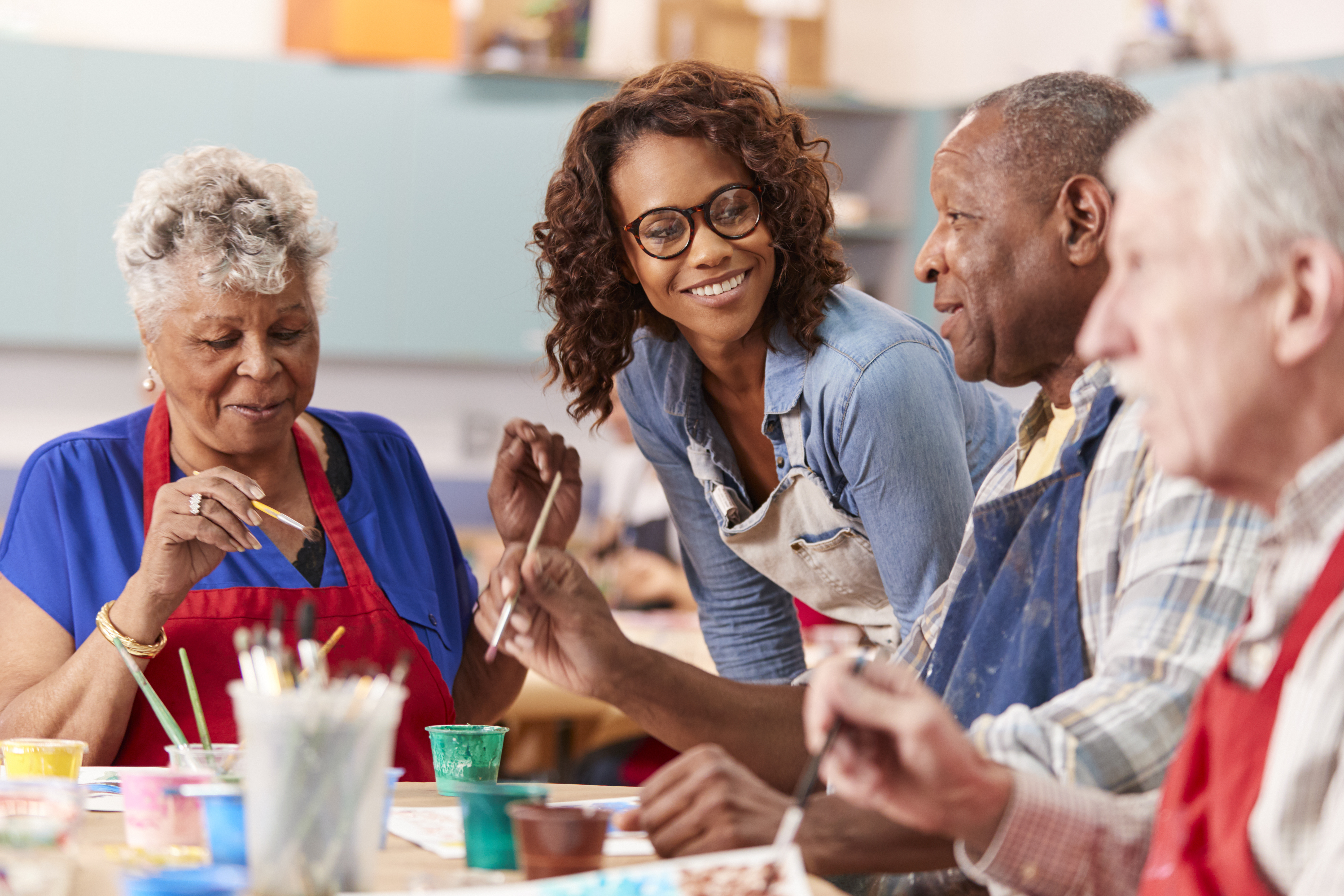Published date: 22 March 2024
Advice from our experts: optimising big and small spaces for social prescribing
‘Just in the past 11 months, we have had over 628 referrals to social prescribers from GPs’ says Janis Gibson, CEO of Castle Point Association of Voluntary Services (CAVS). Janis was on the panel of our recent Q&A webinar which was packed with discussion and insight about the benefits of social prescribing on improving community wellbeing. In this blog, you’ll get some top tips about creating and managing community wellbeing spaces from the webinar. You can watch the full recording for more detailed insight, here.
Why is social prescribing important?
Social prescribing connects people with mental or physical challenges to community services such as support and activity groups. The aim is to reduce social isolation, develop new skills and improve overall wellbeing.
Janis explained how social prescribing supports patients with personal aspects of their life “People have debts, housing and other issues affecting their wellbeing, GPs and other clinicians can refer people to social prescribers to pick up on those aspects of life”. The social prescribing hub at CAVS, part of the Canvey Island Health Centre, was launched in July 2022.
CAVS use their social prescribing hub in a variety of ways including:
- Weekly weight management sessions
- A social setting to have a cup of tea coffee.
- Ageless inspiration: weekly get togethers to play board games.
- Computer learning: people volunteering to help older generations with basics of computer learning.
- Small garden area outside the centre to provide a green social space.
Read our customer guide for more examples of how social prescribing sites have helped local communities.
What’s the process of transforming a space for social prescribing?
Transforming a space for social prescribing requires all parties involved to collaborate closely from the start to make sure we really understand and meet the needs of the local community.
Martin Meltzer, Senior Capital Manager at NHSPS, explained how we worked with CAVS in this project, “One of the key elements was the enthusiasm from all stakeholders that we are working with to make impact on the community.”
Some of the key steps involved were:
- We held a meeting on site with CAVS to evaluate the technicalities of the space and had discussions with them to understand how it can be transformed to meet the needs of locals using the health centre. Being on site is key; it helps you understand the people, local services and transport links among other benefits.
- We established an estimated budget of £75,000 and agreed a timeframe; four months preparation and three -month construction time.
- We investigated licences and agreements including rent and facilities management.
What we delivered:
- A training/meeting room that CAVS can use to run the social activities mentioned earlier by Janis
- A new comfortable group space, transformed from a disused kitchen area.
- Two office spaces for the CAVS teams to work from.
- A small private room for consultation and confidential conversations.
- A small garden area with seating and pavement.
One of the main themes from the webinar was that social prescribing hubs can be big or small and don’t always require a massive restructure of the site. Vacant indoor or outdoor spaces can be transformed into vibrant community hubs through various ways such as adding tea and cake stations inside a health centre or simply just putting benches outside a GP practice.
Laura Mills, our CSR Manager for green social spaces, emphasised the importance of creating more outdoor spaces, “We are working to deliver things like allotment beds where gardening groups can join or even places for people to sit and have lunch like sensory gardens or men’s sheds”.
Read our eight step guide to help you create a space for social prescribing.
What makes a good social prescribing space?
Using CAVS as an example, Janis explained a good social prescribing site offers:
- Accessible location: Being in an accessible, central location on the island is very beneficial. It’s local to schools shops which means services are easily noticed by people in the area.
- Integrated care: The social prescribing hub is in the same building as the GP practice which makes it very easy for the local community to know where to go to for any sort of health/care support. It also allows the GPs and CAVS team to collaborate closely, ultimately providing more joined up care to the patient.
- Bespoke design: CAVS has its own side entrance which means people using the social prescribing spaces are not interrupted by the ongoings of the GP practices and vice vera.
Quoc Truong, CSR Manager at NHSPS, mentioned key takeaways from our research report with The Health Creation Alliance report which had similar findings “A service close to other services, making sure they’re not feeling segregated” and the importance of accessibility “Looking at transport links and parking in the area”.
Read our report to find out what ten different community groups – often those with poor health outcomes – want from community spaces.
Key takeaways and advice from the webinar:
- Social prescribing provides a unique opportunity to help improve community wellbeing through non-medical interventions.
- Social prescribing hubs can be big or small, indoor or outdoor; small changes can create great opportunities.
- A good social prescribing site is easily accessible and close to other services to offer integrated care.
- Speak to as many stakeholders as possible and get regular feedback from all parties involved to continue providing the best solution for the building and the community.
Watch the webinar recording
Get new ideas about how to set up and manage a space for social prescribing. You'll learn:
- What makes a good site for community use
- How to overcome challenges in transforming spaces
- What's best practice collaboration between GPs






